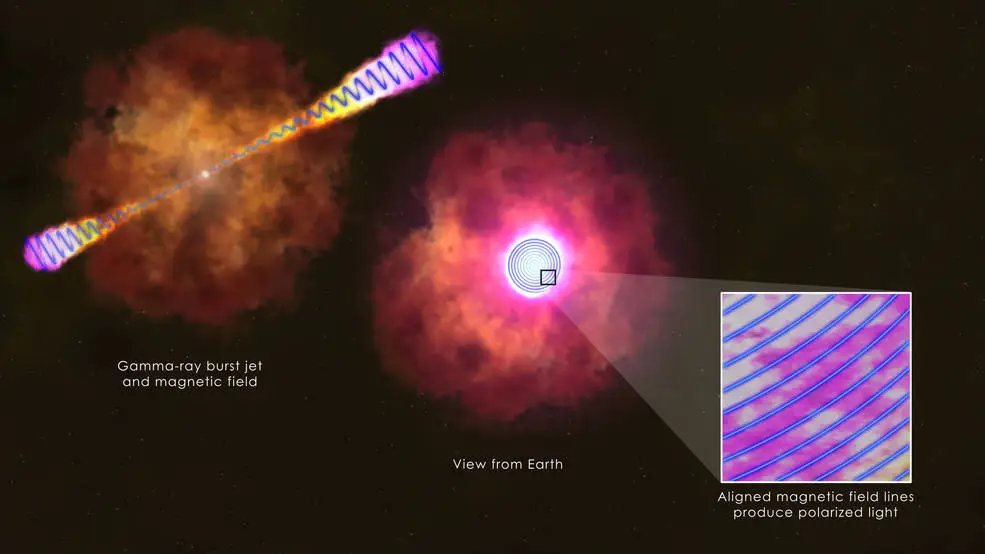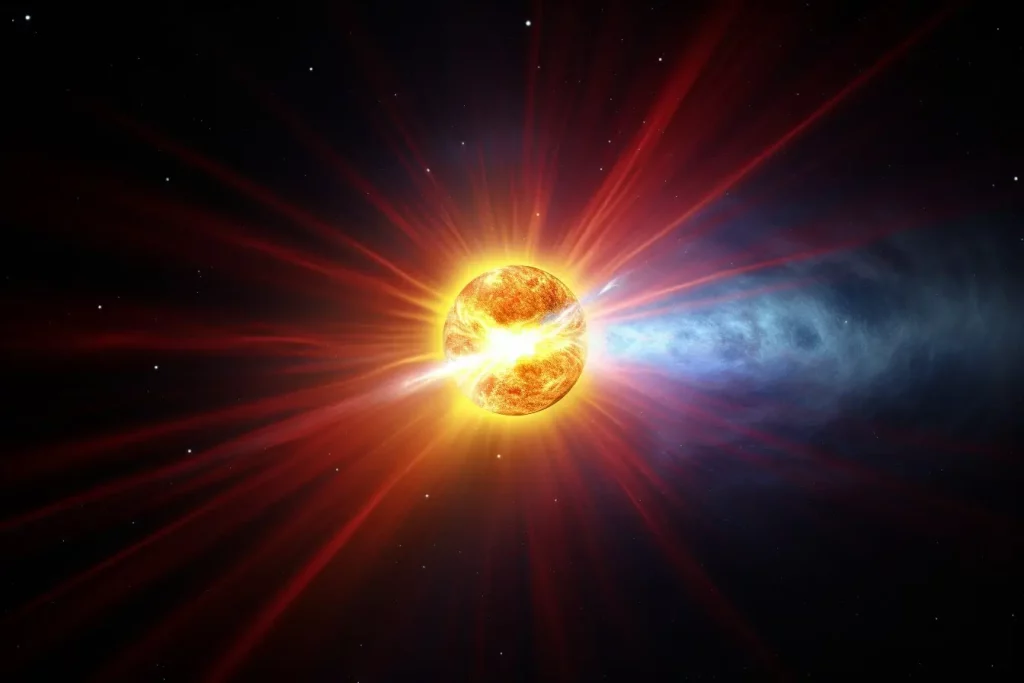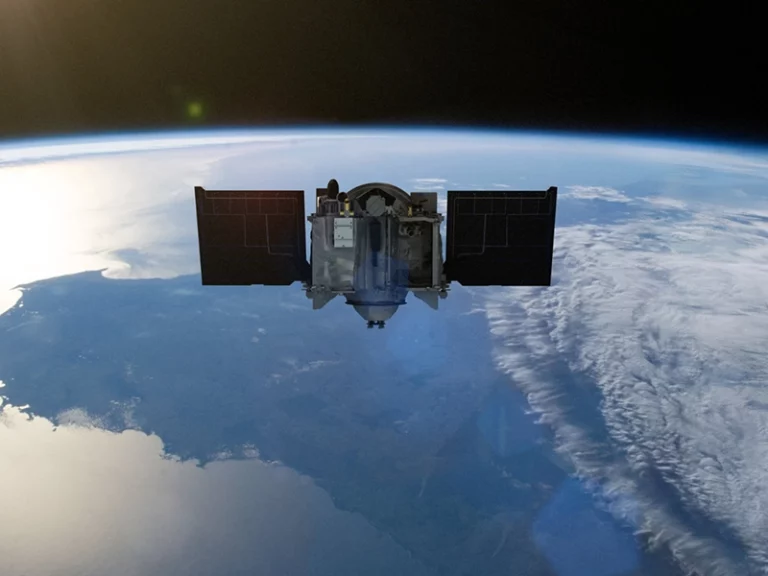On October 9th, 2022, a powerful burst of gamma radiation swept through the solar system, quickly earning the name BOAT (Brightest Of All Time) from astronomers. The source of this radiation was a gamma-ray burst (GRB), the most energetic class of explosions in the universe.
Scientists could reconstruct the intensity of the emission from the Fermi data since the burst was so bright that it effectively blinded most gamma-ray instruments in space. After analyzing the data, the burst was 70 times brighter than any GRB previously observed.
What is a Gamma-Ray Burst and Why is GRB 221009A Significant?
The signal from GRB 221009A had been traveling for about 1.9 billion years before it reached Earth, making it among the closest-known “long” GRBs, whose initial, or prompt, emission lasts more than two seconds.
These bursts are believed to represent the birth of black holes formed when the cores of massive stars collapse under their weight. As the black hole ingests the surrounding matter, it blasts out jets in opposite directions. These jets contain particles accelerated to near the speed of light, emitting X-rays and gamma rays as they stream into space.

With this type of GRB, astronomers expect to find a brightening supernova a few weeks later, but so far it has proven elusive. One reason is that the GRB appeared in a part of the sky that’s just a few degrees above the plane of our galaxy, where thick dust clouds can significantly dim incoming light.
Astrophysicists Surprised by Lack of Supernova Despite Bright Burst
“We cannot say conclusively that there is a supernova, which is surprising given the burst’s brightness,” said Andrew Levan, a professor of astrophysics at Radboud University in Nijmegen, Netherlands.
Since dust clouds become more transparent at infrared wavelengths, Levan led near- and mid-infrared observations using NASA’s James Webb Space Telescope – its first use for this kind of study – as well as the Hubble Space Telescope to spot the supernova.
“If it’s there, it’s very faint. We plan to keep looking,” he added, “but it’s possible the entire star collapsed straight into the black hole instead of exploding.”
Observations of the BOAT span the spectrum, from radio waves to gamma rays, and include data from many NASA and partner missions, including the NICER X-ray telescope on the International Space Station, NASA’s NuSTAR observatory, and even Voyager 1 in interstellar space.
Asst. Prof.Kate Alexander Uncovers New Findings in Gamma-Ray Burst Research
Kate Alexander, an assistant professor in the department of astronomy at the University of Arizona in Tucson, noted that “Being so close and so bright, this burst offered us an unprecedented opportunity to gather observations of the afterglow across the electromagnetic spectrum and to test how well our models reflect what’s happening in GRB jets.”
She added, “Twenty-five years of afterglow models that have worked very well cannot completely explain this jet. In particular, we found a new radio component we don’t fully understand.
This may indicate additional structure within the jet or suggest the need to revise our models of how GRB jets interact with their surroundings.”
The burst also allowed astronomers to study distant dust clouds in our galaxy. As the prompt X-rays traveled toward us, some of them reflected off of dust layers, creating extended “light echoes” of the initial blast in the form of X-ray rings expanding from the burst’s location.
The X-ray Telescope on NASA’s Neil Gehrels Swift Observatory discovered the presence of a series of echoes. Detailed follow-up by ESA’s (the European Space Agency’s) XMM-Newton telescope, together with Swift data, revealed these extraordinary rings were produced by 21 distinct dust clouds.
Conclusion
Gamma-ray bursts, the most violent events in the universe, can help us to understand more astronomical mysteries. We are constantly discovering new things when we look deeper into this universe.
To learn more about space check out this other article on Exploring The Solar System Live With NASA Simulator.
I hope you found this article interesting. Thanks for reading.
Reference
NASA missions study what may be a 1-In-10,000-year gamma-ray burst. (2023, March 28). Link to the source.





